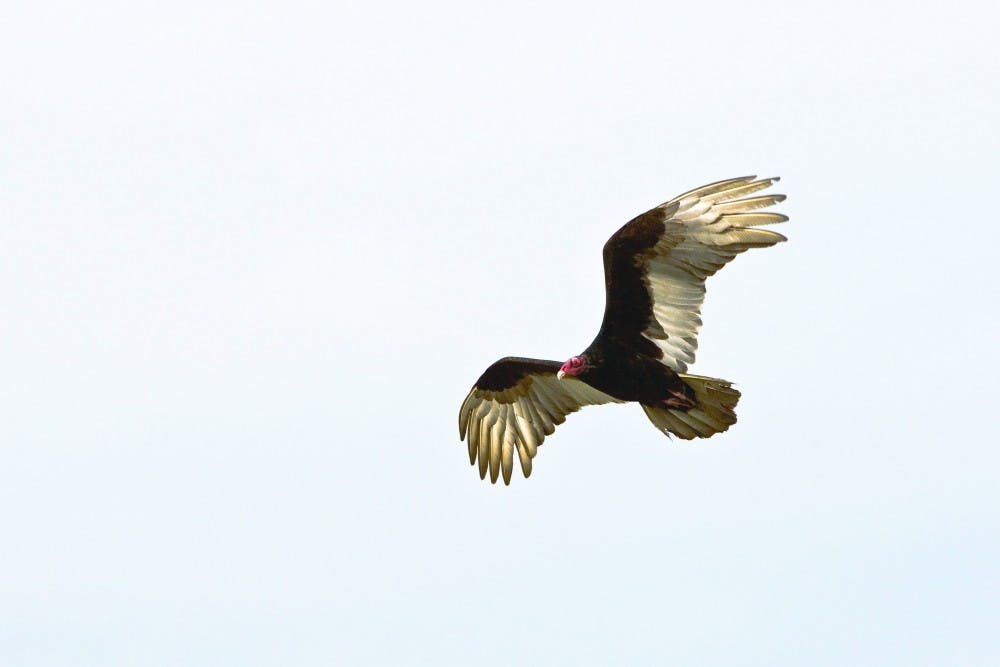By Kendra Smalley | Contributor
Autumn in Indiana is beautiful: leaves don brilliant colors before the wind strips them away; apples and pumpkins come into season; cool weather sets in that is perfect for chunky sweaters; migratory birds fly south in anticipation of looming blizzards. Among the flocks of squawking geese and swooping starlings, you may notice some large birds soaring with a slight wobble through the sunny autumnal skies. These are turkey vultures, which join transitory groups called kettles as they migrate in the spring and fall.
Before you turn away in disgust from reading about scavengers, allow me to ask you to pause and consider the beauty of a turkey vulture in flight. Have you ever seen a massive bird wheeling high on a sunny day, its body slightly tottering from side to side and its wings rarely flapping? That is a turkey vulture. Neil Sabine, associate professor of biology at Indiana University East, explains, "Turkey vultures are weak flyers and therefore rely mostly on finding columns of rising air with favorable tail winds."
He adds that turkey vultures are the widest ranging vultures in the world. One of the differences between new world vultures - such as turkey vultures - and old world vultures - the antagonistic birds portrayed as vicious and evil in film and media - is that the former ones lack talons and have a relatively weak beak. This means they cannot quickly and easily tear into the flesh of a carcass, nor can they kill their prey. Old world vultures, on the other hand, can. The Indiana Department of Natural Resources explains that this is one of the reasons why the Cherokee word for turkey vulture means "Peace Eagle."
But why are scavengers, such as vultures, important to an ecosystem? Humans tend to be disgusted at the thought of animals eating carcasses, but these types of carnivores actually help remove rotting and diseased material from an area. Sabine clarifies that, "If turkey vultures, or animals like them, were removed from an ecosystem, diseases would increase and the number of flies would increase." Since flies can spread disease, turkey vultures play a vital role in the health and sanitation of an ecosystem. In fact, their scientific name, Cathartes aura, means "to cleanse from the air." But these birds don't only eat carcasses. Up to 50 percent of their diet consists of vegetation.
Turkey vultures have few natural predators. BioKIDS, which partners with academic institutions such as the University of Michigan Museum of Zoology, reveals that turkey vulture eggs and chicks are often preyed upon by raccoons. Whereas large owls occasionally prey on the adult birds, most turkey vulture deaths are due to man-made structures, including fences, cars, and wind turbines. Nevertheless, these animals are fortunately not an endangered species.
Next time you see a turkey vulture gracefully wheeling through the sky on a windy day, hopefully you will appreciate its contribution to the beauty of the world around you. Without these magnificent birds, disease and bacteria would be much more rampant, not to mention that the autumnal air wouldn't be filled with the crisp and delightful scents of fallen leaves and pumpkin spice.





